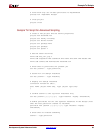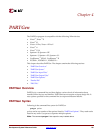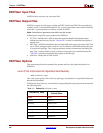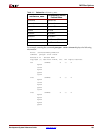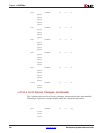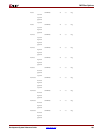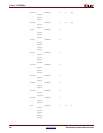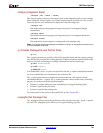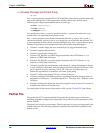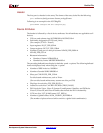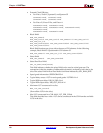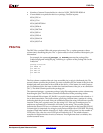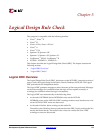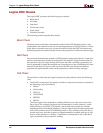
Development System Reference Guide www.xilinx.com 107
PARTGen Options
R
–intstyle (Integration Style)
–intstyle {ise | xflow | silent}
The –intstyle option reduces screen output based on the integration style you are running.
When using the –intstyle option, one of three modes must be specified: ise, xflow, or silent.
The mode sets the way information is displayed in the following ways:
–intstyle ise
This mode indicates the program is being run as part of an integrated design
environment.
–intstyle xflow
This mode indicates the program is being run as part of an integrated batch flow.
–intstyle silent
This mode limits screen output to warning and error messages only.
Note:
The -intstyle option is automatically invoked when running in an integrated environment, such
as Project Navigator or XFLOW.
–p (Creates Package file and Partlist Files)
–p name
The –p option generates a partlist.xct file for the specified name and also creates package
files. All files are placed in the working directory. Valid name entries include architectures,
devices, and parts. Following are example command line entries of each type:
–p virtex
(Architecture)
–p xcv400 (Device)
–p v400bg432 (Part)
If an architecture, device, or part is not specified with the –p option, detailed information
for every installed device is submitted to the partlist.xct file.
The –p option generates more detailed information than the -arch option, but less
information than the –v option. The -p option generates a three column entry describing
the pins. For each pin the following data appears:
• Column 1: contains either pin (user accessible pin) or pkgpin (dedicated pin).
• Column 2: specifies the pin name.
• Column 3: specifies the package pin.
For a description of the entries in the partlist file, see the “Partlist File”.
–nopkgfile (No Package File)
The –nopkgfile option cancels the production of the .pkg files when the – p and –v options
are used. The –nopkgfile option allows you to bypass creating .pkg files.



